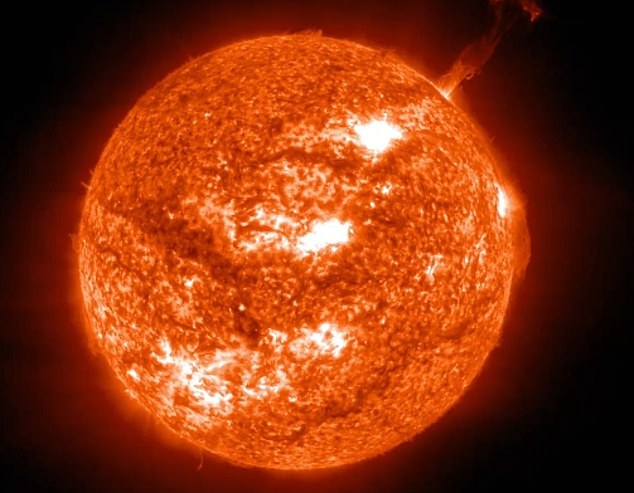Space weather watchers are keeping a close eye on our Sun this week as four significant bursts of solar energy race toward Earth.
Scientists are raising concerns about potential disruptions to technology, communications, and even power grids as the charged particles make their way toward our planet.
NOAA Issues Geomagnetic Storm Watch
The National Oceanic and Atmospheric Administration (NOAA) has issued a moderate G2 geomagnetic storm watch for Thursday, signaling that devices and systems dependent on electricity, radio signals, and GPS navigation could experience interruptions.
Geomagnetic storms occur when clouds of charged solar particles, known as coronal mass ejections (CMEs), collide with Earth’s magnetic field, causing it to ripple and wobble.
These particular CMEs were ejected from the Sun between October 11 and 13, and space weather scientist Tamitha Skov explained, “Storms 2 to 4 arrive starting midday on October 15.
We could be dealing with their effects until early October 17, assuming the Sun doesn’t send any more Earth-directed storms.”
Stronger Storms on the Horizon
Skov noted that while the first CME will likely bring only a mild disturbance, the next three are arriving in quick succession, “pancaked together,” which could amplify their impact.
A weaker G1 storm might linger into Friday, but its effects are expected to be limited.
Skov also mentioned that Earth has already experienced a “warm-up pitch” ahead of the main event, with three additional storms and a surge of fast solar wind still approaching.
The Sun’s Active Region AR4246
The root of this activity is a massive cluster of dark sunspots, known as Region AR4246.
Sunspots are areas where the Sun’s magnetic field is highly active and twisted, making them prone to releasing bursts of energy called solar flares.
This region has already produced multiple M-class flares—mid-level eruptions strong enough to interfere with radio signals and create bright auroras on Earth.
One notable flare, an M2.7 event on October 13, launched a CME that is now speeding toward Earth, contributing to the geomagnetic storm forecast.
Northern Lights and Regional Effects
The northern parts of the U.S. are expected to experience the brunt of the geomagnetic storm.
Enthusiasts may see the aurora, or northern lights, stretching across the northern and upper Midwest, from New York to Idaho, possibly including Maine, Michigan, Wisconsin, Minnesota, North Dakota, and Montana.
During stronger solar activity, the aurora might even appear as far south as Iowa or northern Illinois.
While power grid effects are expected to be minor—mostly small voltage fluctuations—they could occur in high-latitude regions, including Alaska and northern U.S. states bordering Canada.
Radio and GPS signals may also face temporary interference, particularly at high latitudes and on aircraft or polar flight routes, but impacts should be far less noticeable farther south.
Rising Solar Activity and Future Implications
Scientists have observed that since 2008, the Sun’s solar wind has grown stronger, showing increases in speed, density, temperature, and magnetic field strength.
This rising activity suggests that future solar storms could be even more powerful, occasionally hitting Earth and causing disruptions to technology and communication networks.
Share on Facebook «||» Share on Twitter «||» Share on Reddit «||» Share on LinkedIn